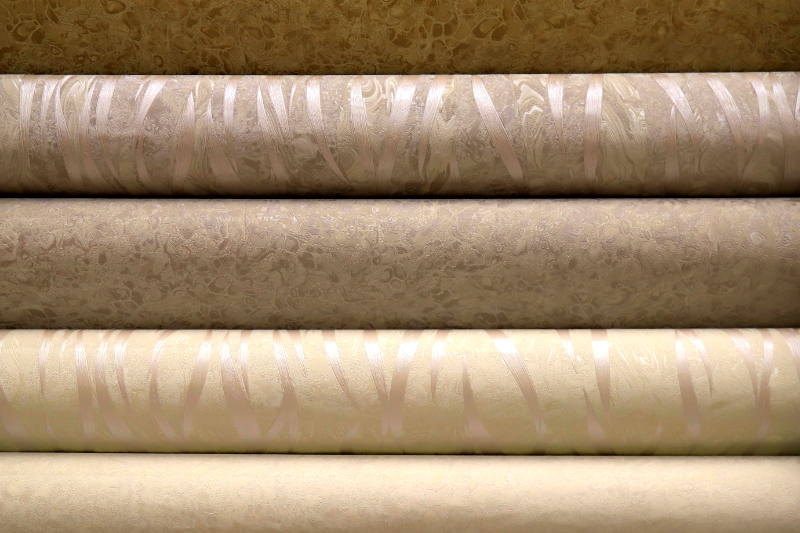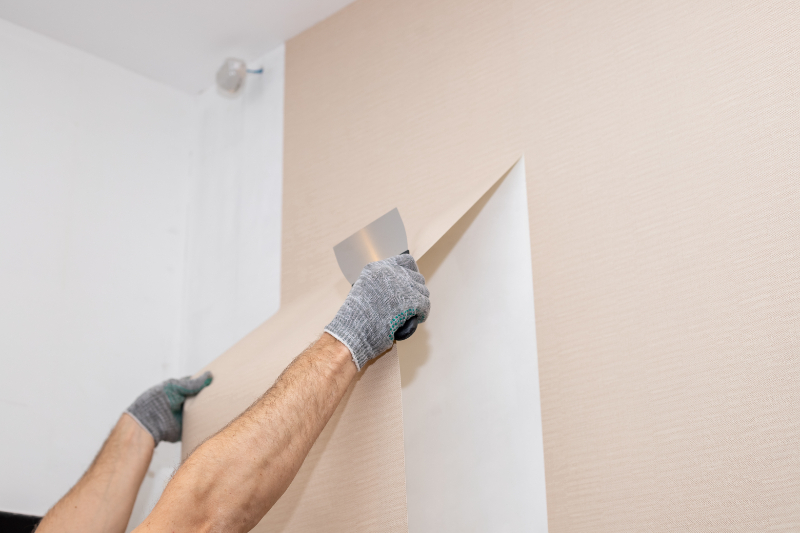Find out how choosing the right wallpaper for your room can enhance your home's interior design. Learn about different colour schemes, textures, and feature walls to achieve the best results.
Matching Wallpaper to Your Interior Style
Matching your wallpaper's colour, design and texture to the style of your room is the easiest way to make the room's design feel intentional.
Fixed elements, like your flooring, countertops and sofas, can establish the colour palette of your room, and using one dominant colour and one supporting tone from these features can help the wallpaper feel natural.
You also need to consider the room's undertones. Colours like white, pink, yellow, green or grey can create either warm or cool atmospheres. Therefore, it's best to choose a wallpaper design that shares the room’s undertone.
If your room's style is quiet and cosy, a monochrome scheme (three tints of the same colour) can create a sense of depth and relaxation without overwhelming the eye. On the other hand, analogous colours (colours that are next to each other on the colour wheel) can create a sense of harmony and liveliness.
Considering Patterns and Textures
Considering patterns and textures is one of the most effective ways to ensure your wallpaper complements your room’s style. Patterns can influence the visual proportions of a space since vertical stripes draw the eye upward and create the impression of height, while horizontal designs can make a room feel more open and inviting. Texture, on the other hand, interacts with light in unique ways.
A matte or woven finish can absorb sunlight, soften glare and create a calm atmosphere, while reflective or metallic textures can brighten up darker areas.

Embossed vinyl, faux plaster, or linen-look wallpapers are durable, easy to clean, and ideal for high-use areas such as kitchens and bedrooms due to how they reflect light. On the other hand, cork, sisal, and mica-fleck finishes can add richness, depth, and drama to a room, making them perfect for living or dining rooms.
Additionally, if the room already has a busy design, wallpaper with a textured solid or a subtle pinstripe can steady the composition and make the room feel cohesive. Busy patterns can hide minor scuffs or flaws, and heavily textured papers can hide larger imperfections, such as cracks.
Light and Space: How Wallpaper Can Change a Room’s Feel
Wallpaper can reshape how a room feels by manipulating the light and perceived space. Bright colours with soft contrasts can bounce light around a room, making dim rooms feel larger and more open, whereas darker tones absorb light, which can make a room feel cosy and intimate.
North-facing rooms often benefit from warm bases such as cream, taupe and blush in order to counter the cool light, while sun-drenched south-facing rooms are better suited for cooler blues and greens since they can absorb the light's glare.
Matte papers and natural linen or grasscloth can reduce a room's brightness and hot spots, whereas pearlescent, metallic, or lacquered inks can reflect light and brighten rooms or dark corners. The wallpaper's texture can also create micro-shadows that enrich your wall's design without causing clutter, which is ideal for homeowners wanting to add depth without using bold patterns.
Feature Walls vs Full Room Wallpapering
A feature wall is a single wall that's treated as a focal point, and it allows bold patterns, vibrant colours, or striking textures to shine without overwhelming the entire room. Feature walls work well for homeowners who want to add drama or personality to a space but still retain a sense of balance and restraint.
Feature walls allow homeowners to experiment with designs like large florals, metallics or murals, and these rooms can help define zones in open-plan living areas or add character to small spaces. However, feature walls must be chosen carefully because if the design feels disconnected from the rest of the room, it can look unbalanced rather than stylish.

On the other hand, full-room wallpapering wraps every wall in a pattern or texture to create a more immersive and cohesive look. This option works best with soft geometrics, tonal textures, or monochrome palettes, since busy, high-contrast patterns can make a room feel overcrowded.
Full-room wallpapering is ideal for rooms that need a unified atmosphere, such as cosy bedrooms or relaxing living rooms. Covering all four walls can also help small rooms feel more open, since the continuity removes any visual breaks, while full-room wallpapering in large rooms can make the space feel warmer and more grounded.
When deciding between the two, homeowners should consider both the room's size and function. A feature wall is ideal for larger or multifunctional areas that need a focal point, whereas full-room wallpapering is ideal for creating a room's overall mood or atmosphere.
Enhance and transform your walls with our expert wallpaper hanging services in Edinburgh. At W. Martin, we deliver flawless wallpaper installations, smooth finishes, and stylish designs that can add space, beauty and personality to any room.

